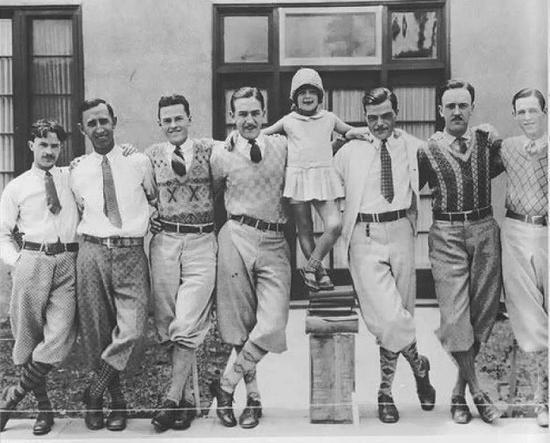
To wear socks or not, this is a historical question. The invention of socks in Europe can date back to the 8th century BC when the ancient Greeks and Romans wrapped their feet in cloth woven from animal hair. After all, socks were invented to keep warm.
The prototype of the modern socks people wear today was born in the early 20th century. In an age when bathing facilities were limited, people paid more attention to the dirt resistance of clothes, so at that time, almost all socks for men were black and gray, and the socks were also much longer. In addition, socks were not so easy to buy at that time, so men would spend a lot of energy to care for socks.
In the 1920s and 1930s, socks were gradually becoming the accessories that showed the sensitiveness to the fashion trends, and colors like blue, brown, and yellowish-brown as well as patterns like stripes and plaids occurred.

In the first decade of this century, especially in recent years, the "no sock look" favored by the fashion world has brought unprecedented challenges to the sock industry. Many people have basically given up keeping the ankles warm, and they match ninth pants with sneakers even in autumn and winter, so socks have become almost invisible and unmentionable accessories, and they are the you-know-who in the fashion world.
Until recent years, the fortune of socks began to bottom out. The change begins with fashion shows. Socks have become a kind of necessary accessories to steal the scene on men's catwalks. Now personalized long stockings have a greater sense of presence than ever, and they are squeezing the edges of pants that are already moving upward. The exposed socks create a geek and skater boy style.
But why the socks that have become the necessary accessories in recent years? Perhaps because most boys only wear a certain style of pants and shirt every day, while the socks highlight their personalities. In addition, men wear similar shoes in daily life, so socks also can develop the adornment effect and rescue the originally insipid even boring modeling.
In hot seasons, when everyone wears a T-shirt + shorts + sneakers, a pair of exposed personalized stockings can quickly distinguish yourself from others. However, the match should follow some basic rules even if socks have brought about an upswing"ugly chic":
1. The color of personalized stockings should echo with that of your clothes and shoes. Let's take the most common black and white socks for example. It's the least likely to go wrong when they match with the shorts of the same color system, so beginners can try stockings with enough confidence.
2. In a similar way, gray, navy, and even red socks should also echo with the print on your clothes or the color of your shoes. Don't let your socks become isolated patches all over your body.
3. It is best to hide the personalized stockings of chromatic colors and fluorescent colors under the ninth pants or trousers so that it will be cute when you sit down or walk around occasionally. Matching the shorts with personalized stockings requires more than 120 percent confidence.